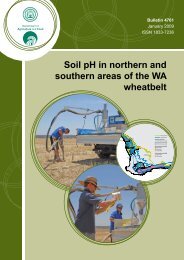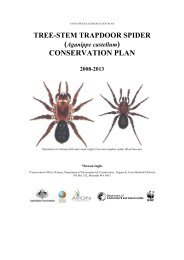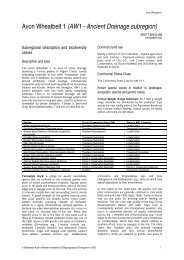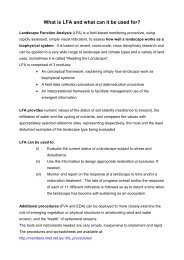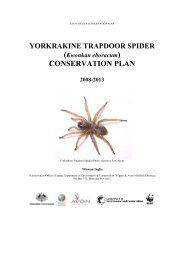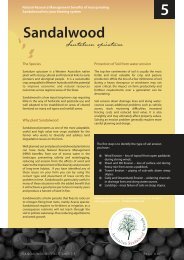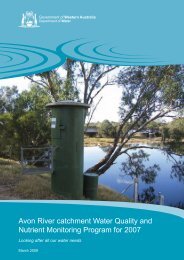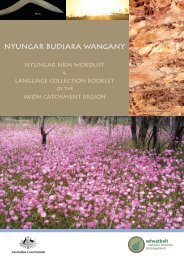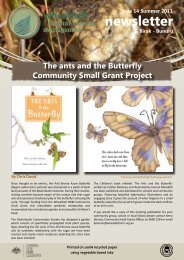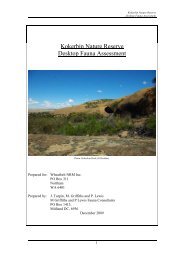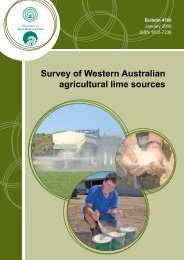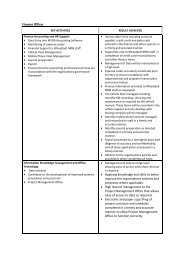RECORDING TRADITIONAL KNOWLEDGE O r ... - Wheatbelt NRM
RECORDING TRADITIONAL KNOWLEDGE O r ... - Wheatbelt NRM
RECORDING TRADITIONAL KNOWLEDGE O r ... - Wheatbelt NRM
You also want an ePaper? Increase the reach of your titles
YUMPU automatically turns print PDFs into web optimized ePapers that Google loves.
BACKGROUND<br />
A<br />
literature review was conducted as a requirement of the ‘Recording Traditional<br />
Knowledge for Natural Resource Management in the Avon River Basin’ project,<br />
and this informed the research process. The findings from this literature review<br />
are discussed below.<br />
To conduct the search, a review of existing available literature was carried out using the<br />
electronic database and web pages of the Department of Indigenous Affairs, Department of<br />
Environment and Heritage, Avon Catchment Council as well as Google Scholar. To narrow<br />
the literature search, the following search criteria were applied: [Noongar]; [recording of<br />
traditional storytelling]; [Aboriginal and Torres Strait Islander or Indigenous]; [Natural<br />
resource management, stories and practices]. Transcripts of existing oral recordings taken<br />
from Noongar elders over the past 20 years were also sourced, along with the existing<br />
collection of resources in the local Kulbardi Aboriginal Studies Unit at Murdoch University.<br />
The primary aim of the researchers was to focus on literature pertaining to Noongar cultural<br />
sites of significance in relation to Natural Diversity (Ecoscapes, Healthy Ecosystem), Fire,<br />
Land Management (Salinity) and Water themes (Avon River Pools & Rivers and Wetlands).<br />
A heritage site is any place of importance and significance to Aboriginal people, such as a<br />
place where Aboriginal people have left any object; or a sacred, ritual or ceremonial site.<br />
(State of Western Australia, 1972).<br />
“Sacred sites are places that bear the marks of the creative<br />
ancestral spirits, which continue to have a presence in land<br />
formations. These ancestral spirits followed pathways and sites,<br />
and form a connection for people from various and diverse<br />
language groups into a wider community of Aboriginal people<br />
with the land. They are geographical features which mark<br />
episodes in the stories of the ancestral spirits’ journeys<br />
throughout Australia. Sacred sites are the settings of their<br />
custodians’ most important knowledge and activities. They are<br />
fundamental to the sense of self.” (CALM, 2002).<br />
Page 13



